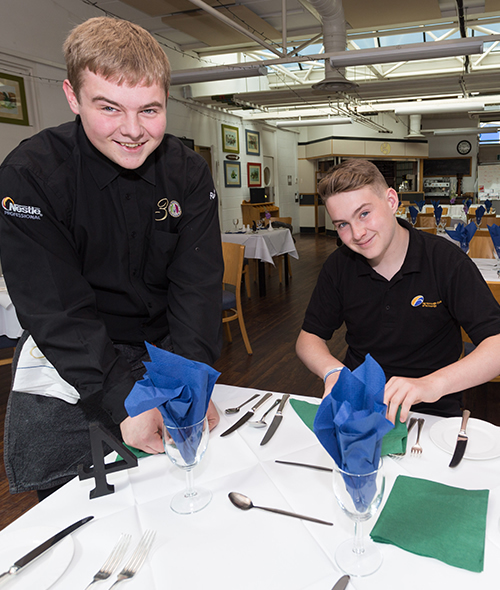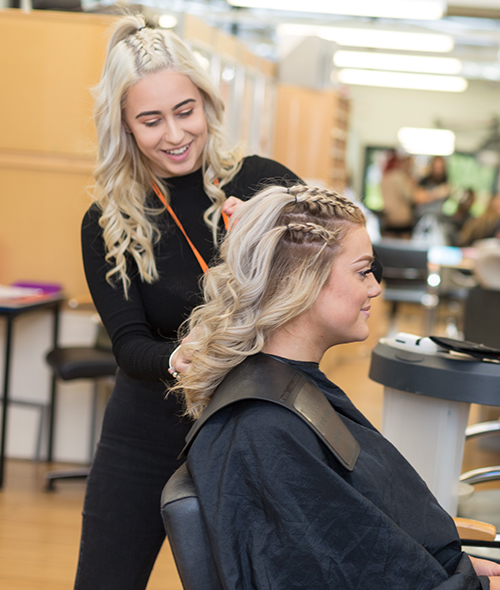Behind the Scenes at London Fashion Week
Ever wondered what it’s like to work at London Fashion Week? Our Fashion and Textiles lecturer, Sam Jones, tells all in an article for Sewing World Magazine‘s November Issue.
Behind the Scenes at London Fashion Week with Samantha Jones
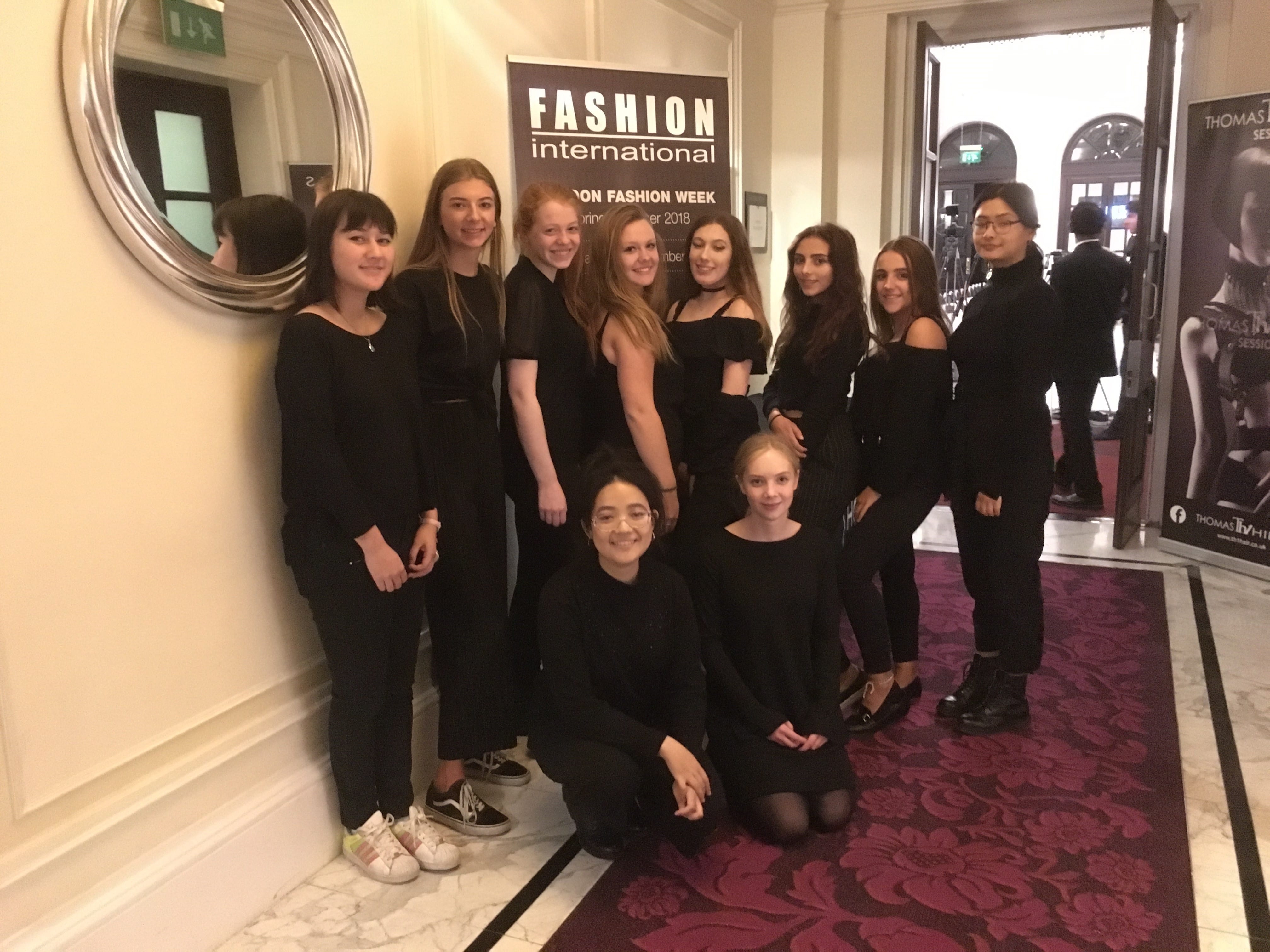
Sam took Fashion and Textiles Students to London Fashion Week. They included: Tamzin Porter, Olivia West, Morgan Dove, Lisa Gurung, Kirsty Kimber, Elise Jones, Natasha Greck, and their student mentors were: Elise George, Hannah Mills, Smriti Limbu, Kat Khumcheun, and Binja Rana.
“For one week in September various locations all over London are transformed into catwalks, ready to show both established and up and coming designer collections to the world during London Fashion Week.
If you’re in London at this time there is a real buzz around the city; models, photographers, designers, hair and makeup teams, critics and bloggers come from all over the world to show and view, what are going to be the hot trends in Spring/Summer 2018. This year fashion week ran from the 15th-19th September and I have had the privilege to work backstage as the Dressing Team Coordinator at one London show, for the past four years.”
Have a look at our Fashion and Textiles course, and come along to our next Open Event
“So what is it like to work at London Fashion Week? Fashion Week for the models, designers and backstage crew starts the day before at a fittings session. The show that I work for, is for both emerging and established international designers and is run in a central London hotel. On arrival we’re straight to work setting up one of the hired spaces ready for the fittings session.
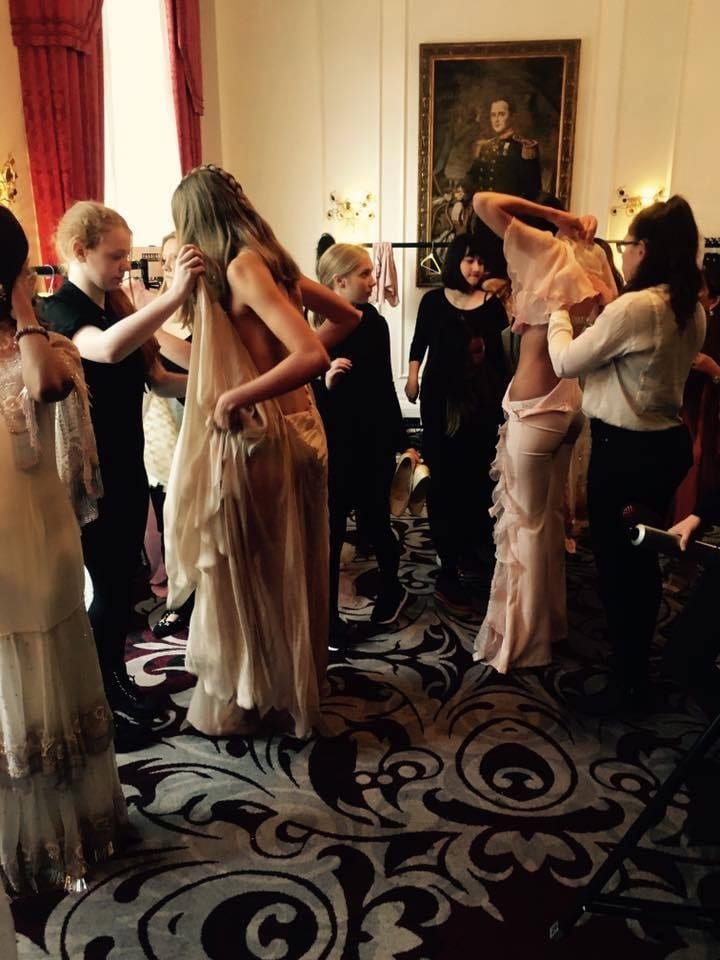
Clothes rails are put together and labeled with the designer names. From the outside, even this small element would appear simple, but right from the beginning, good organisation is key to a successful show. The designers and models are arranged into two groups, Pool A and Pool B and each are set out on different sides of the room in show order. To make life slightly more interesting, we also had two daytime solo shows as well as the multi-designer evening show to organise this year.
The dressing team is responsible for looking after all of the designers needs, making sure their garments are presented professionally and that they hit the runway in the correct order on the right model – no pressure! The fitting sessions are crucial for ensuring this and start with the designer working with the dressers to put their garments in show order. Some designers arrive with their garments all neatly organised in garment bags and others arrive with their entire collection in the smallest suitcase you have ever seen – you know who you are if you’re reading this!

Once the garments are in show order, the dressers are split into two teams, one works with Pool A and the other with Pool B, generally we have eight to ten dressers working on the shows. In my day job I am the Course Leader for a Fashion and Textiles Level 3 programme and as part of the students work experience, they have the chance to be selected to work backstage. Graduated students often come back to mentor them and it is a fantastic opportunity to experience the industry that they could, one day be working in.
Next, the models are called through to start the fitting sessions. Generally, the designers have an idea who they want to wear each particular garment, so we start to that brief. At this stage, dressers literally help the models in and out of their garments. Sometimes garments fit well and the designer likes the look, other times adjustments need to be made and garments are pinned or sewn in place. Occasionally garments just don’t fit or look right and then they are switched around until the designer is happy with the overall look of their collection. Some designers make decisions quickly, others don’t want much involvement from the dressers and others ask our advice constantly.
Designers are allowed to show sixteen garments and generally there are twelve models in each pool, which means we have to select models who will change outfits. Adequate time needs to be allowed for this – a minimum eight model gap, even then, this is a tight changing time. Once the order is finalised, one of the dressers will fill out a form listing the models name, garment, shoes and label the hangers 1-16. The rest of the dressing team undress the models and make sure each garment is hung on the correct hanger and in the right order, ready for show day. As Head of Dressing I run through each rail checking collections are in order, that there is adequate changing time and that the changes are noted down for both myself and the backstage manager. Fittings generally take about three hours and once they’re complete, we head home for the evening.

Show day means a very early start – I meet the dressing team at 7am and we head into London. When we arrive at the venue it is already busy with preparations. The dressing team then have a few hours of steaming or ironing ahead of them in order to make sure the collections hit the runway looking their best.
About an hour before the solo shows take place, we bring the garment rail and any accessories backstage and I have a final run through of the model order and make sure that any changes are clearly marked. Once we are all backstage there is no escaping out the front. The show director gives one final briefing and then we get the models dressed in their garments with the designer constantly checking everything is just so. Hair and makeup join us for final tweaks and as show time approaches, the tension rises. Ten minutes before showtime the audience begin to be seated, and about five minutes before the start I organise the models into runway order and check that the dressing team have the garment changes in hand. Then the music starts. Once the show has started, it is organised chaos backstage. Models walk serenely out onto the catwalk and glide backstage again. The backstage manager shouts if they need to be changed and dressers and models are frantically pulling garments on and off. Amongst it all, I’m crossing off model names and shouting the name of the next model ensuring that they are being kept in runway order. And before you know it, it’s all over.
As we retire to the fittings room, the last designer for the evening show has arrived and we’re back into fittings with one team of dressers whilst the second team carry on steaming garments. Periodically I check the garment orders and finally about 5pm, we get chance to have a half hour break. This year I went for a walk around Trafalgar Square and bumped into graduate designer Maddie Williams, who was showing her Graduate Collection in the middle of The Strand with models running in and out of a Superdrug store. It was a fantastic sight and really sums up Fashion Week for me.
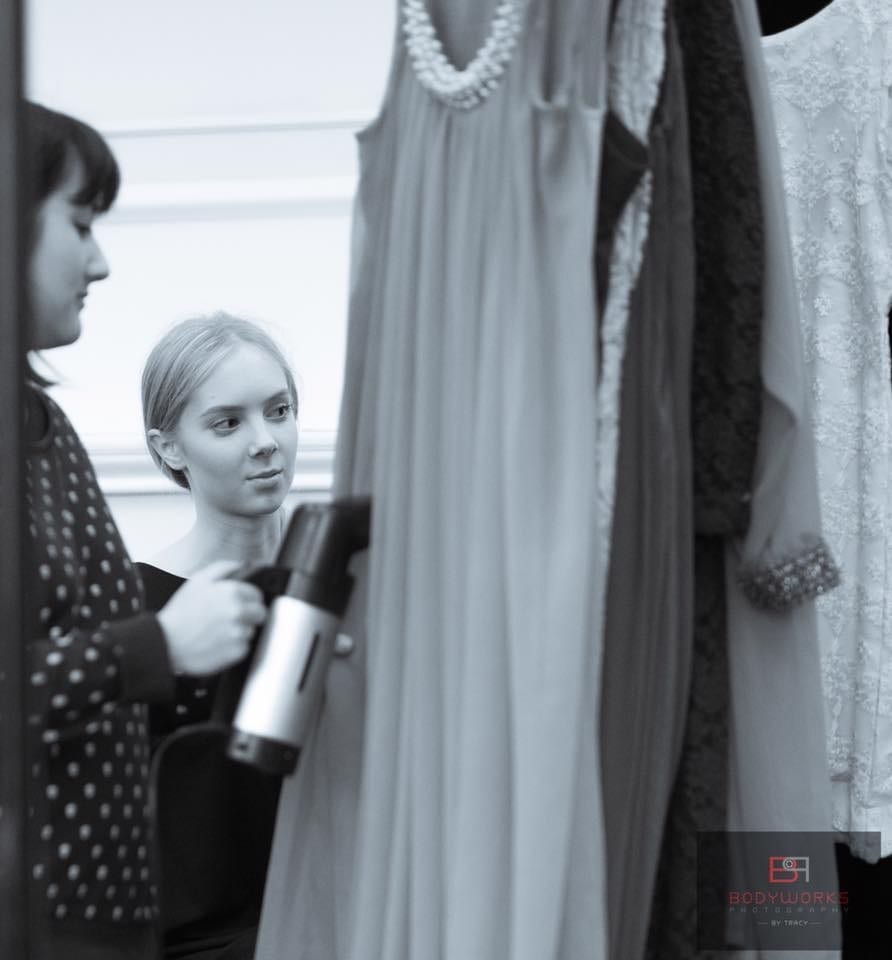
The multi-designer show is a whole different affair to the solo shows. There are seven designers and one milliner in the backstage space, along with hair and makeup, models, dressers and garment rails. It’s a tight squeeze and not the glamorous look that I’m sure everyone expects. Everything runs the same as the solo shows, just on a larger scale and a little more frantic in places. Within forty-five hectic minutes, it’s all over. We then get the mannequin model ready. This is specific garment and model chosen by the designer and presented at the after show party.
Our final task is to make sure all the garments are hung back up on the correct designer rails and that the backstage area is relatively clear. As we collect our belongings, many of the designers thank us for our help and we catch up with designers that we’ve helped in previous shows. We then head home, tired, happy and thoroughly inspired.
So what’s it like to work backstage at London Fashion Week? It’s exhilarating, totally exhausting and I’m left full of anticipation for the next one!”
This article has been taken from Sewing World’s November issue, on sale now.
For a closer look at Fashion International’s London Fashion Week show, take a look at the video below:
Has this inspired you to grab your sewing machine or start designing a garment? If so, take a look at our Fashion and Textiles course, and come along to our next Open Event.




